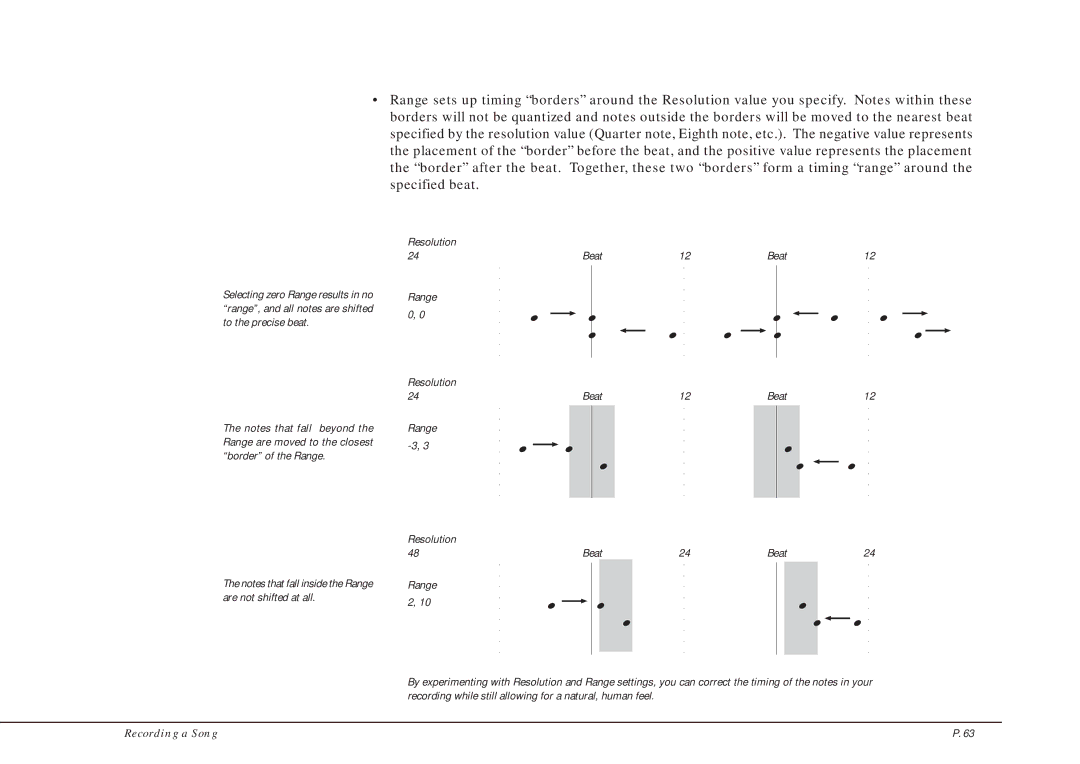
•Range sets up timing “borders” around the Resolution value you specify. Notes within these borders will not be quantized and notes outside the borders will be moved to the nearest beat specified by the resolution value (Quarter note, Eighth note, etc.). The negative value represents the placement of the “border” before the beat, and the positive value represents the placement the “border” after the beat. Together, these two “borders” form a timing “range” around the specified beat.
| Resolution | |
| 24 | |
Selecting zero Range results in no | Range | |
“range”, and all notes are shifted | 0, 0 | |
to the precise beat. | ||
|
| Resolution | |
| 24 | |
The notes that fall beyond the | Range | |
Range are moved to the closest | ||
“border” of the Range. | ||
|
| Resolution |
| 48 |
The notes that fall inside the Range | Range |
are not shifted at all. | 2, 10 |
|
Beat |
| 12 |
| Beat | 12 | |
Ï Ç Ï | È | Ï Ï | Ç | Ï | È Ï | Ï ÇÇ |
Ï |
|
| Ï |
| Ï | |
| Beat12 | Beat12 | ||
Ï Ç Ï |
| Ï |
| Ï Ï È Ï |
Beat | 24 | Beat24 | ||
Ï Ç | Ï | Ï |
| Ï Ï È Ï |
|
|
|
|
|
By experimenting with Resolution and Range settings, you can correct the timing of the notes in your recording while still allowing for a natural, human feel.
Recording a Song | P. 63 |
